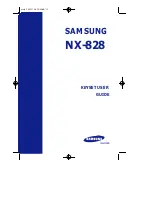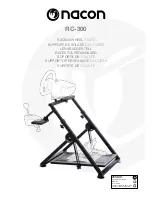
Trigno Quattro, Duo, Mini EMG Sensor User’s Guide
17
“Quattro” EMG Measurement Data Modes
Con
fig
ur
at
ion
ID
# D
ata
S
lo
ts
1
#E
M
G C
ha
nne
ls
EM
G
Sa
m
pl
in
g P
eri
od
2
(m
s)
EM
G S
am
pl
in
g Ra
te
2
(sa
/se
c)
RM
S W
in
do
w
3
(m
s)
RM
S
Sa
m
pl
in
g P
eri
od
2
(m
s)
RM
S U
pd
ate
R
ate
4
(s
a/
se
c)
EM
G B
andw
idt
h
5
(H
z)
EM
G I
nput
R
ang
e
6
(m
V)
EM
G R
es
olu
tion
D
ep
th
7
(bi
ts)
AC
C S
am
pl
in
g P
eri
od
2
(m
s)
AC
C S
am
pl
in
g
Ra
te
2
(s
a/
sec)
AC
C B
andw
idt
h
8
(H
z)
ACC R
an
ge
7
(g
)
AC
C Res
ol
ut
io
n
7
(bi
ts)
Gyr
o S
am
plin
g P
er
iod
2
(m
s)
GY
RO
S
am
pl
in
g Ra
te
2
(s
a/
sec)
GY
RO
B
andw
idt
h
8
(H
z)
Gyr
o R
an
ge
7
(dps)
Gyr
o R
es
olu
tion
7
(bi
ts)
1 2 4
0.9
1111 -- -- -- 20-450 11
22 16 -- -- -- -- -- -- -- -- -- --
2 4 4 0.45
2222 -- -- -- 20-450
10-850
11
22 16 -- -- -- -- -- -- -- -- -- --
1)
The Trigno System is designed with 16 data slots for wireless transmission. Sensors can occupy up to 4 slots
depending on the sampling rate settings.
2)
Sampling period is the precise time elapse between samples in milliseconds. The sampling rate is a rounded
expression of 1/”sampling period” expressed as samples/second (sa/sec).
3)
Analog EMG Sensor Butterworth filter bandwidth: 2 pole high pass corner, 4 pole low pass corner in Hz.
4)
EMG signal input range of sensor in millivolts.
5)
sensor resolution depth across input range.
Denotes raw EMG signal acquisition.










































